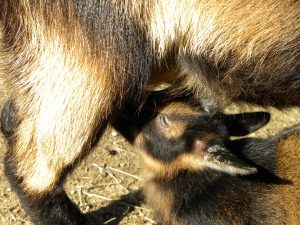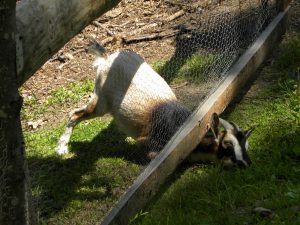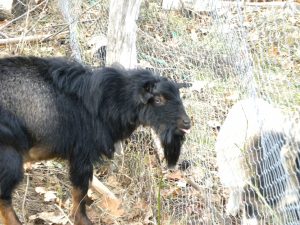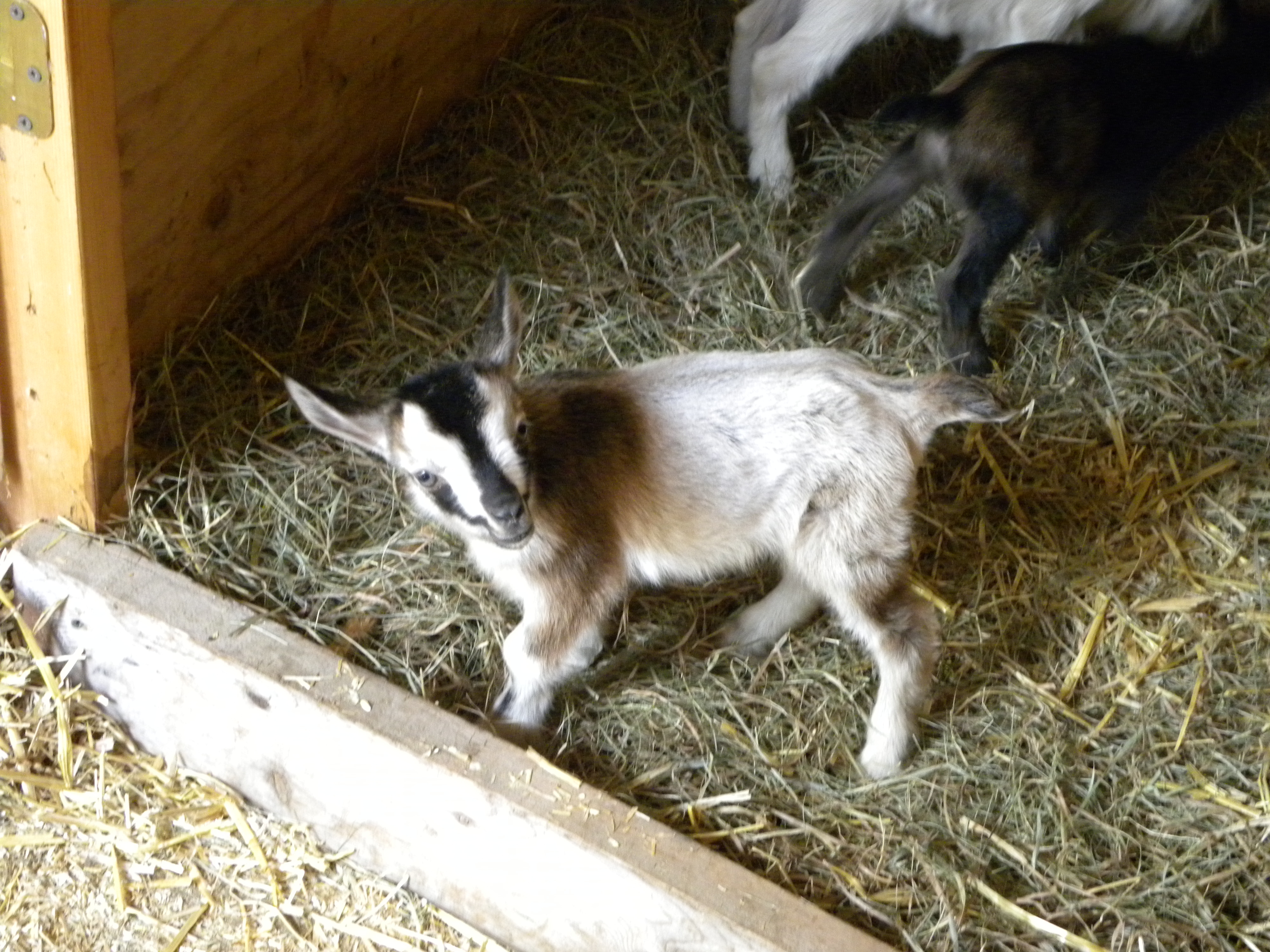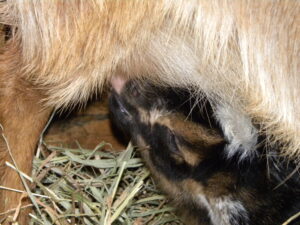This has been a good week for reflection and planning. We’ve gotten out the new calendars, are noticing the growing light, and we’ve been driven inside by storms and bitter cold!
First, a look back to consider accomplishments on the homestead in 2017. I tend to push forward and move on to what’s next, but I know it’s good for me to take time to learn from successes and problems we had, and to allow for a sense of satisfaction and gratitude for what worked. I will make better, smarter plans coming from this place.
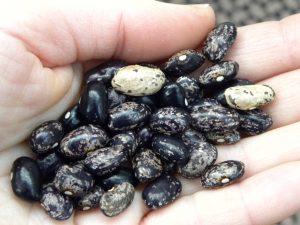
One of my bean plants produced this seed. I have no idea what it is – anyone know?
In the plant realm: we expanded our growing areas using swales, sheet mulching and hugelkultur. We planted 5 new trees, 10 new berry bushes, many new perennials, and a big garden of annuals. I tried some new crops: various heritage dried beans, a heritage variety popcorn, and 3 new types of potatoes. My records show that the Bora Valley and Nicola potatoes were my biggest producers this year. Yay for record keeping!
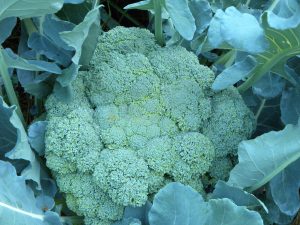
Beautiful Bug-free Broccoli
We had very few insect pest problems this year, other than some early squash vine borers. I had almost no colorado potato beetles, and the cabbage worms didn’t become an issue until much later in the season than usual. I planted both of those crops late this year possibly missing the first reproductive cycle for the pests. That was purposeful for the beetles, but accidental for the cabbage worms.
In our animal endeavors: We raised new chickens using 2 broody hens and 1 incubator hatch. None of our ducks succeeded in brooding, so we just had a few new ones from the incubator. We kept milking the goats, although the previous
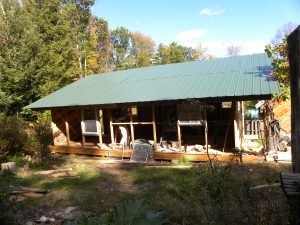
Steve Building a Hay Shelter
fall’s breeding failure meant less of it. I built my apiary back up after a lot of winter hive losses. I did have one hive that overwintered well and had an amazing season. Steve built a new shelter for hay and animals which I anticipate will help us get much more organized thus saving us quite a bit of work in the future.
This year I also taught classes in beekeeping, soil building, animal care and permaculture. I accepted the 2017 NOFA-NH Gardener of the Year Award. I wrote new blog posts to share here on our website.
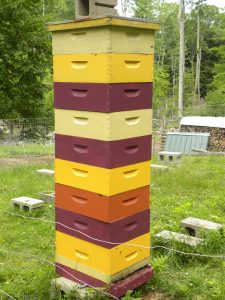
Successful Bee Hive – Hope to Have More Like These in 2018!
In the new year, I look forward to more plants and animals and continued good work with the earth. Our seed, potato and tree catalogues are spread out to choose next season’s varieties. We did save more of our own seed this year, but not for all crops. We’ve identified where we want to expand to next and even got that started in the long, warm fall we had. I have learned not to order trees or bushes for the areas we didn’t finish yet! We have some unhappy plants overgrowing their nursery beds from the years I was too optimistic about how fast the work would go.
For my blogging this year, I am going to try something new. Often I am asked: “what do you do at your farm?” and “how much do you grow?” I never have great answers. Each season and every day is so different, in terms of what we do and what we harvest. In 2018 I am going to try to give a monthly update, summarizing what we did and what we harvested in the previous month. It won’t be a quick answer to those questions, but it should be informative.
I hope you’ll follow us and join me in charting the next year as we experience it!

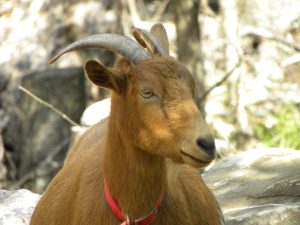
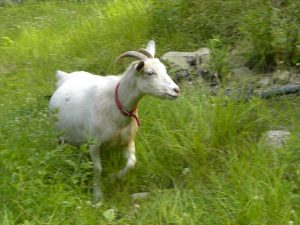
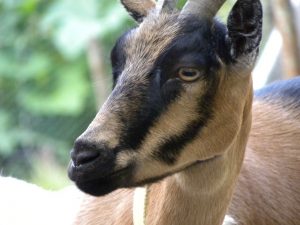
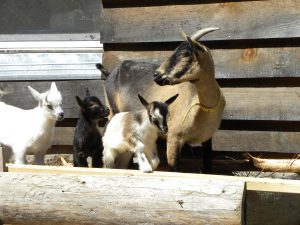
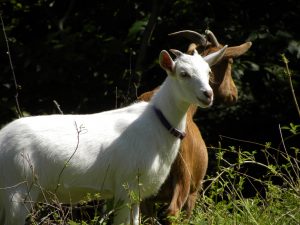 They have thick winter coats and shiny summer hair. They behave appropriately, are friendly, curious and active.
They have thick winter coats and shiny summer hair. They behave appropriately, are friendly, curious and active.